#Queen Meret Neith
Explore tagged Tumblr posts
Text
A German-Austrian team led by archaeologist Christiana Köhler from the University of Vienna is investigating the tomb of Queen Meret-Neith in Abydos, Egypt. She was the most powerful woman in the period around 3,000 BC. Recent excavations prove her special historical significance: the researchers found 5,000-year-old wine and other grave goods. This fuels speculation that Meret-Neith was the first pharaoh of ancient Egypt and predecessor of the later Queen Hatshepsut. The team recently began archaeological excavations in the tomb of Queen Meret-Neith of the 1st Dynasty (c. 3,000 BCE) in Abydos and discovered significant new information about this important historical woman. Queen Meret-Neith was the only woman to have her own monumental tomb in Egypt's first royal cemetery at Abydos. She was probably the most powerful woman of her time and today's researchers speculate that Meret-Neith may have been the first female pharaoh in ancient Egypt and thus the predecessor of the later Queen Hatshepsut from the 18th dynasty. Her true identity remains a mystery. The new excavations bring to light exciting new information about this unique woman and her time.
Continue Reading.
91 notes
·
View notes
Text
Archaeologists discover 5,000-year-old wine at the tomb of Meret-Neith in Abydos

A German-Austrian team led by archaeologist Christiana Köhler from the University of Vienna is investigating the tomb of Queen Meret-Neith in Abydos, Egypt. She was the most powerful woman in the period around 3,000 BC. Recent excavations prove her special historical significance: the researchers found 5,000-year-old wine and other grave goods. This fuels speculation that Meret-Neith was the first pharaoh of ancient Egypt and predecessor of the later Queen Hatshepsut.
The team recently began archaeological excavations in the tomb of Queen Meret-Neith of the 1st Dynasty (c. 3,000 BCE) in Abydos and discovered significant new information about this important historical woman.
Queen Meret-Neith was the only woman to have her own monumental tomb in Egypt's first royal cemetery at Abydos. Read more.
825 notes
·
View notes
Text
Archeaology gives us the name of another woman in History
Archaeologists digging in one of the oldest cities in Egypt have discovered evidence that sheds new light on the life of the ancient Egyptian queen Merneith, who ruled during the 1st Dynasty.
The excavation of a tomb in the Umm al-Qaab area in Abydos found an inscription on a “stone vessel” that provides new historical information about Merneith’s reign, during which she held “a great position” and was responsible for the central government offices, said Christiana Köhler, who led the dig.
“It has been speculated that Merneith may have been the first female Pharaoh in Ancient Egypt,” Köhler said in a news release, “but her true identity remains a mystery,”
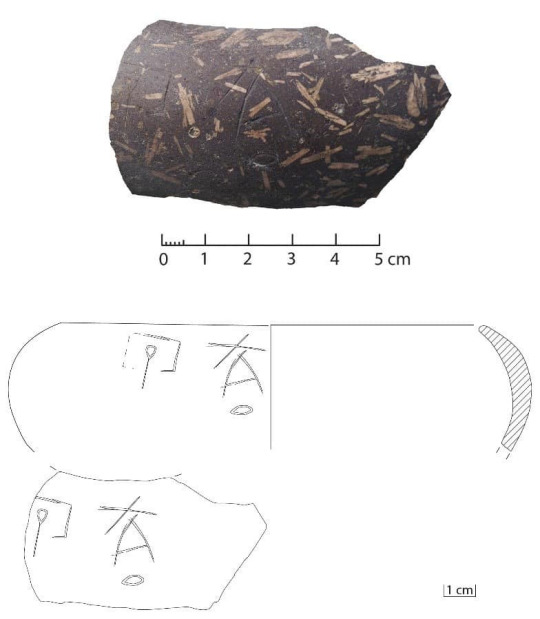
A fragment of a stone vessel recently found in the tomb of Queen Merneith. It has an incised inscription with her name on the right and the mention of the royal treasury on the left. Photo courtesy of EC Köhler, M Minotti.
Köhler specified that Merneith, also known as Meret-Neith, may have been in charge of the treasury among other government offices, supporting the idea of her historical significance. She is the only 1st-Dynasty woman whose tomb has been uncovered in Abydos so far.
“Considering that these are the remains of people’s lives and actions from 5,000 years ago, we are stunned every day at the amazing detail we encounter during our investigations, including the perfectly preserved grape seeds, craftwork and even footprints in the mud,” Köhler said over email.
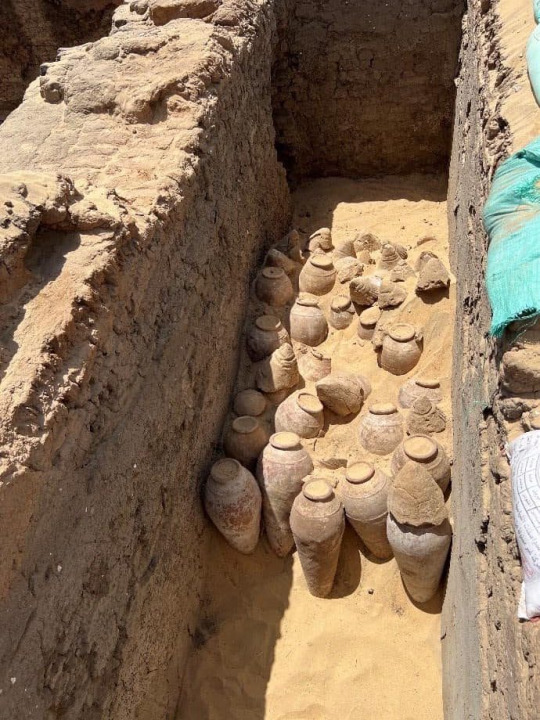
The wine jars are seen during the excavation of Merneith’s tomb. Photo courtesy of Egypt’s Ministry of Tourism and Archaeology

Egypt’s Tourism Ministry highlighted hundreds of 5,000-year-old wine jars found in the tomb in the Umm al-Qaab area in Abydos, one of the oldest cities in Egypt located about 354 miles south of Cairo. Photo courtesy of Egypt’s Ministry of Tourism and Archaeology
Discoveries made in the dig also “challenge the long-held belief in human sacrifice,” Köhler added in the news release.
Next to Merneith’s burial site, archaeologists found a group of 41 tombs for her courtiers and servants, indicating these chambers were built during different periods of time.
“This observation, together with other evidence, radically challenges the oft-proposed, but unproven idea of ritual human sacrifice in the 1st Dynasty,” Köhler said.
The news release highlighted the discovery of hundreds of 5,000-year-old wine jars that had never been opened. The archaeological team—hailing from Egypt, Germany and Austria—found the remains of wine inside.
Mustafa Waziri, Secretary General of Egypt’s Supreme Council of Antiquities, said in a statement that the discovered jars are large in size and “in a good condition of preservation.”
“Some of them are very well preserved with their jar stoppers still intact,” Köhler said.
#women in history#Discoveries in Archaeology#Egypt#Ancient Egypt#queen Merneith#1st Dynasty#Abydos#Queen Meret-Neith#5000 years ago#Umm al-Qaab
283 notes
·
View notes
Text
Archaeologists Excavating the Tomb of Egypt’s First Female Pharaoh Found Hundreds of Jars Still Holding Remnants of Wine
The dig has also shed new light on the reign of the ancient queen.
— Adam Schrader | October 18, 2023
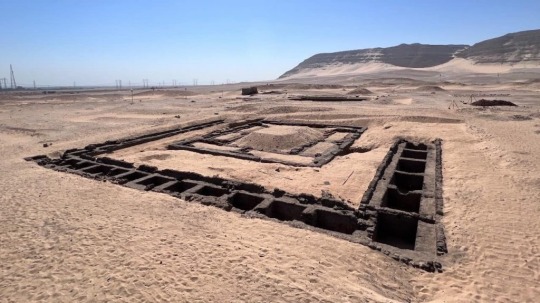
An archaeology team has discovered evidence that the Ancient Egyptian Queen Merneith “had a great position” and was responsible for the central government offices. Photo courtesy of Egypt’s Ministry of Tourism and Archaeology
Archaeologists digging in one of the oldest cities in Egypt have discovered evidence that sheds new light on the life of the ancient Egyptian queen Merneith, who ruled during the 1st Dynasty.
The excavation of a tomb in the Umm al-Qaab area in Abydos found an inscription on a “Stone Vessel” that provides new historical information about Merneith’s reign, during which she held “A Great Position” and was responsible for the central government offices, said Christiana Köhler, who led the dig.
“It has been speculated that Merneith may have been the first female Pharaoh in Ancient Egypt,” Köhler said in a news release, “but her true identity remains a mystery,”
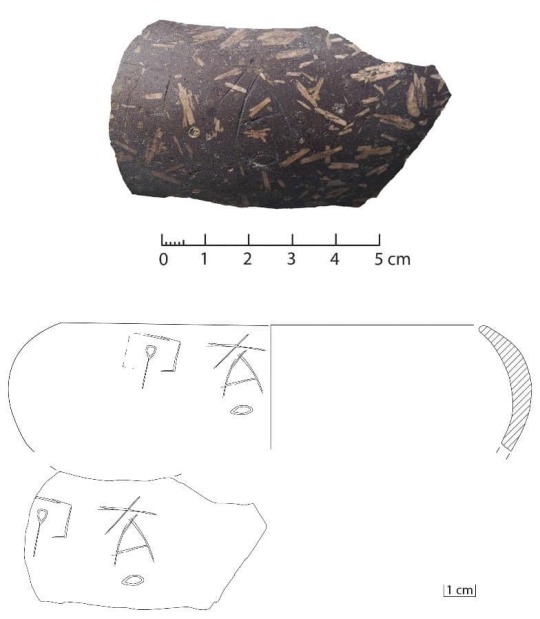
A fragment of a stone vessel recently found in the tomb of Queen Merneith. It has an incised inscription with her name on the right and the mention of the royal treasury on the left. Photo courtesy of EC Köhler, M Minotti.
Köhler specified that Merneith, also known as Meret-Neith, may have been in charge of the treasury among other government offices, supporting the idea of her historical significance. She is the only 1st-Dynasty woman whose tomb has been uncovered in Abydos so far.
“Considering that these are the remains of people’s lives and actions from 5,000 years ago, we are stunned every day at the amazing detail we encounter during our investigations, including the perfectly preserved grape seeds, craftwork and even footprints in the mud,” Köhler said over email.
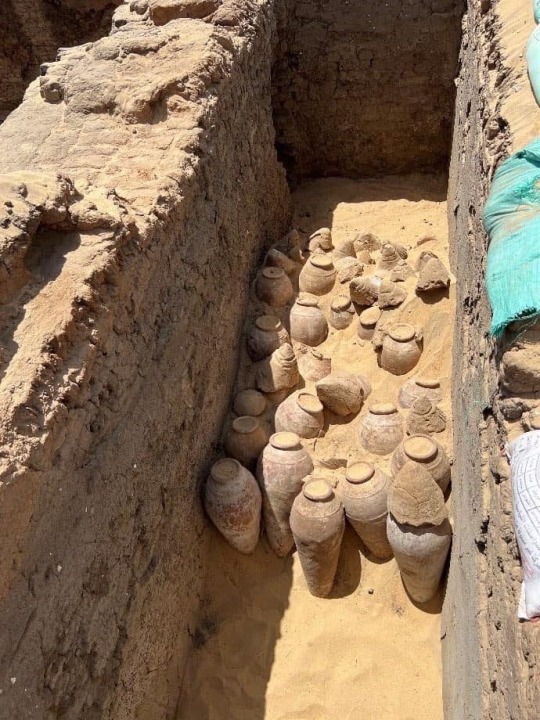
The Wine Jars are seen during the excavation of Merneith’s Tomb. Photo courtesy of Egypt’s Ministry of Tourism and Archaeology
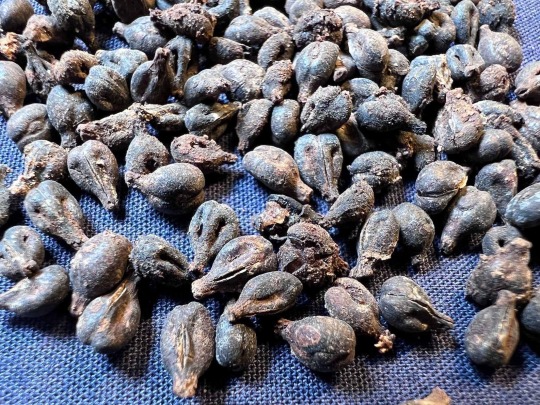
Perfectly Preserved Grape 🍇 Seeds: Egypt’s Tourism Ministry highlighted hundreds of 5,000-year-old wine jars found in the tomb in the Umm al-Qaab area in Abydos, one of the oldest cities in Egypt located about 354 miles south of Cairo. Photo courtesy of Egypt’s Ministry of Tourism and Archaeology
Discoveries made in the dig also “challenge the long-held belief in human sacrifice,” Köhler added in the news release.
Next to Merneith’s burial site, archaeologists found a group of 41 tombs for her courtiers and servants, indicating these chambers were built during different periods of time.
“This observation, together with other evidence, radically challenges the oft-proposed, but unproven idea of ritual human sacrifice in the 1st Dynasty,” Köhler said.
The news release highlighted the discovery of hundreds of 5,000-year-old wine jars that had never been opened. The archaeological team—hailing from Egypt, Germany and Austria—found the remains of wine inside.
Mustafa Waziri, Secretary General of Egypt’s Supreme Council of Antiquities, said in a statement that the discovered jars are large in size and “in a good condition of preservation.”
“Some of them are very well preserved with their jar stoppers still intact,” Köhler said.
#Archaeology#Ancient Egyptian QueenMerneith#Egypt 🇪🇬#Egypt’s First Female Pharaoh#Archaeologists | Jars 🫙 | Wine 🍷#Tomb | Umm al-Qaab area | Abydos#1st Dynasty#Egypt’s Ministry of Tourism & Archaeology#Stone Vessel#Christiana Köhler#Preserved Grape 🍇 Seeds | Craftwork | Footprints 👣#Mustafa Waziri | Secretary General | Egypt’s Supreme Council of Antiquities
0 notes
Text
Unveiled: Ancient Egyptian Queen's Tomb Holds Surprising 5000-Year-Old Wine Secret
Archaeologists from the University of Vienna, led by Christiana Köhler, made an unexpected discovery while excavating the tomb of Queen Meret-Neith, Egypt’s first female pharaoh, in Abydos. During the excavation, the team found sealed wine jars that are estimated to be 5,000 years old. Some of these jars were remarkably well-preserved and still in their original condition. According to Köhler,…
View On WordPress
0 notes
Text
Which Goddess are you? [Egyptian Edition]

Neith
Goddess of war and weaving. Neith, also spelled Neit, ancient Egyptian goddess who was the patroness of the city of Sais in the Nile River delta. Neith was worshipped as early as predynastic times (c. 3000 BCE), and several queens of the 1st dynasty (c. 2925–2775 BCE) were named after her. She also became an important goddess in the capital city of Memphis. Her principal emblem was a pair of crossed arrows shown against the background of a leather shield. A further emblem was a bow case, which the goddess was sometimes depicted wearing on her head in place of a crown. But Neith was usually depicted as a woman wearing the red crown associated with Lower Egypt, holding crossed arrows and a bow. In mythology she was the mother of the crocodile god, Sebek, and later of Re. The worship of Neith was particularly prominent in the 26th dynasty (664–525 BCE), when Egypt’s capital was located at Sais.


Bastet
Goddess of home, domesticity, women's secrets, cats, fertility, and childbirth. Bastet, also called Bast, ancient Egyptian goddess worshiped in the form of a lioness and later a cat. The daughter of Re, the sun god, Bastet was an ancient deity whose ferocious nature was ameliorated after the domestication of the cat around 1500 BCE. She was native to Bubastis in the Nile River delta but also had an important cult at Memphis. In the Late and Ptolemaic periods large cemeteries of mummified cats were created at both sites, and thousands of bronze statuettes of the goddess were deposited as votive offerings. Small figures of cats were also worn as amulets; this too was probably related to the cult of Bastet. Represented as a woman with a cat’s head, Bastet carries an ancient percussion instrument, the sistrum, in her right hand; a so-called aegis, or breastplate (in Bastet’s case, surmounted with the head of a lioness), in her left hand; and a small bag over her left arm. She wears an elaborately ornamented dress. Her cult was carried to Italy by the Romans, and traces have been found in Rome, Ostia, Nemi, and Pompeii.

Meret
Goddess of rejoicing, singing, dancing, and abundance. Meret was a token wife occasionally given to Hapy, the god of the Nile. Her name being a reference to this, meaning simply the beloved. As token wife, she was usually depicted with the same associations as Hapy, having on her head either the blue lotus for Upper Egypt, or the papyrus plant for Lower Egypt. Since Hapy was the source of bountifulness, Meret was usually depicted with an offering bowl, as she was seen, being his wife, as the symbolic recipient of his generosity. Among the lower classes, where nationalism was less important than successful harvest, she was more strongly considered the wife of Hapy than the protectresses of Lower and Upper Egypt, which were more normally his wife in the upper classes. As a deity whose role was to be the symbolic receiver of bounty from the inundation of the Nile, she was strongly associated with rejoicing, such as singing and dancing. Later stories tell that Meret was the goddess of the eighth hour, in the Book of Gates.
Tagging: @strykingback, @flxwerofhell / @crystalmelodies, @spiritualsymbiosis, @gearlessjunkdogjoe, @lachrymosestorm & anyone else who feels up for the quiz!
#{Memes - Dash Games}#| ic - Violent Violet - She makes Angels Scream and Devils Cry |#| ic - Maxie - Artemis's Arrow |#| ic - Hope - She who Survives |#| ic - Alexstrasza - Celestial Child of The Great One |#since maxie & hope had the same result take an alex
0 notes